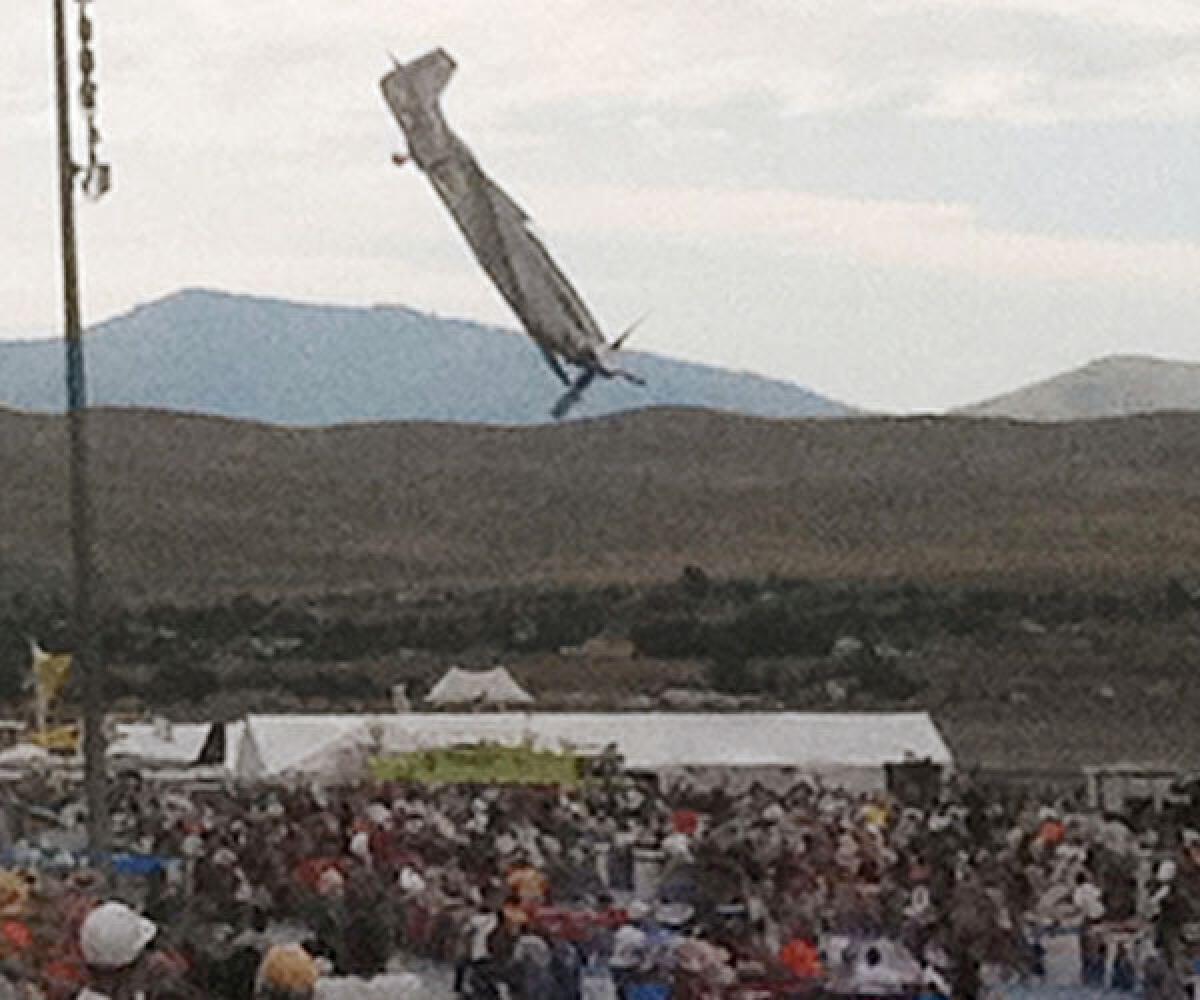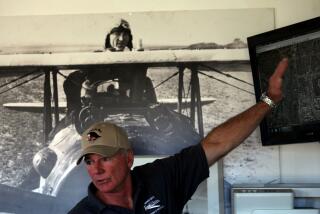NTSB: Plane’s tail structure probably caused Reno air show disaster

- Share via
Less than three weeks before the Sept. 12 start of the 2012 National Championship Air Races in Reno, federal investigators on Monday released a report on the cause of last year’s spectacular crash at those races. The pilot and 10 people on the ground were killed; 70 were injured.
The National Transportation Safety Board said that the failure of an aircraft tail structure on Hollywood stunt pilot Jimmy Leeward’s souped-up World War II-era P-51 Mustang fighter was the probable cause of its Sept. 16, 2011, crash.
By a 5-0 vote, the board approved a conclusion reached by a panel of experts that the malfunction of an elevator trim tab created aerodynamic instability, weakening the structure of the racing plane and rendering it uncontrollable.
The NTSB report also faulted the pilot for playing “Russian roulette,” failing to fully document and test extensive modifications to his aircraft before the accident and, once he was airborne, flying beyond the craft’s limits. In a qualifying race before the crash, Leeward’s propeller-driven Galloping Ghost reached a speed of 530 mph, about 40 mph faster than he had ever gone.
Photos taken moments before the crash showed the plane’s skin wrinkling and the canopy separating from the highly specialized aircraft. Investigators also found several loose screws on a critical tail assembly.
Further, the NTSB report found that structural modifications to the aircraft made it lighter and reduced drag, but also made the aircraft less stable. Investigators said that Leeward was “incapacitated” and probably became unconscious when gravitational forces reached 17 times normal. In the third lap of a six-lap race, the plane rolled to the left and right and then went into a climb before slamming nose first into the tarmac amid rows of box seats.
Chairwoman Deborah Hersman, convening a board hearing of five committee members in Washington, blamed the 74-year-old Leeward for “operating at the edge of the envelope” without fully reporting and testing modifications to his plane.
“At the heart of the tragedy was the fatal intersection in transference of risks from participant to observers,” Hersman said. “One moment, spectators were thrilled at the spectacle of speed only to have it followed by inescapable tragedy. The pilots understood the risks they assumed. The spectators assumed that their safety had been assessed.”
Added board member Robert Sumwalt: “If you want to go out and fly fast and try to win, that’s one thing. If you’re modifying an aircraft without fully understanding how the modifications can affect the aerodynamics, you’re playing Russian roulette.”
The board also criticized Leeward for lying on his application for the races; he listed his age as 59, instead of 74. Officials said Leeward probably had about one second to respond to the plane’s spiral, but that the G forces on his body far exceeded the levels of human tolerance. They said his age probably did not contribute to the crash.
The federal crash investigation board also ruled that the Reno course should be changed and that reinforced barriers should be installed to improve spectator safety. Event officials have said they are improving preflight inspections.
Critics say that race organizers in the past balked at requiring pilots to wear flight suits designed to mitigate high gravitational forces, reasoning that the expensive suits might prove too bulky for cramped cockpits and too hot during competition.
The air race championship, about to mark its 49th year, draws thousands every year to Reno Stead Airport. The 2011 crash resulted in civil liability lawsuits against the pilot’s family and mechanics and organizers.
Meanwhile, race organizers have established a $77-million fund for families of the dead and for spectators injured in last year’s event. Kenneth Feinberg, who oversaw federal compensation for victims of the Sept. 11 terrorist attacks, will administer the money.
Officials say the payouts, reported to be between $15,000 and $75,000, will provide prompt compensation while averting lawsuits.
ALSO:
A never-read eulogy of Neil Armstrong
‘American Taliban’ fights for the right to group prayer
Isaac takes aim at New Orleans, just seven years after Katrina
More to Read
Sign up for Essential California
The most important California stories and recommendations in your inbox every morning.
You may occasionally receive promotional content from the Los Angeles Times.














